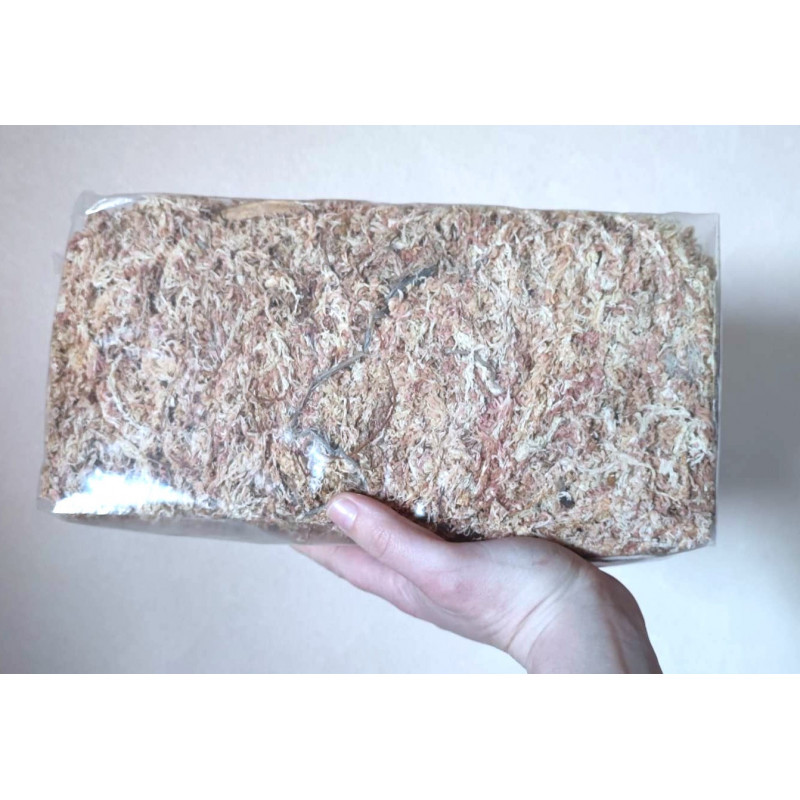



Chilean Sphagnum moss is a popular choice among orchid enthusiasts due to its numerous advantages that contribute to the health and vitality of orchids.
Benefits of Chilean Sphagnum Moss for Orchids
Chilean Sphagnum moss is a popular choice among orchid enthusiasts due to its numerous advantages that contribute to the health and vitality of orchids.
Here are some of the benefits of using Chilean Sphagnum moss for orchids:
Excellent Water Retention: Chilean Sphagnum moss has exceptional water-holding capabilities, allowing it to absorb and retain moisture efficiently. This property helps maintain a consistent level of humidity around the orchid roots, preventing both overwatering and underwatering.
Air Circulation: While retaining moisture, Chilean Sphagnum moss also provides adequate air circulation to the orchid roots. This balance between water retention and aeration is crucial for preventing root rot and promoting healthy root growth.
Natural Antimicrobial Properties: Sphagnum moss has natural antimicrobial properties that can help inhibit the growth of harmful microorganisms and fungi. This can contribute to a reduced risk of root diseases and infections in orchids.
Gentle pH Buffering: Chilean Sphagnum moss has a slightly acidic pH, which can help buffer the substrate and maintain a suitable pH range for orchid growth. It provides a stable environment for nutrient absorption and root development.
Long-Lasting: Sphagnum moss breaks down at a slower rate compared to some other organic materials, providing a longer-lasting substrate option. This means less frequent repotting, reducing stress on the orchids.
Natural Aesthetic Appeal: The fine, delicate texture of Chilean Sphagnum moss enhances the visual appeal of potted orchids. It creates a natural, lush appearance in the pot, enhancing the overall aesthetic of the plant.
Versatility: Chilean Sphagnum moss can be used on its own or blended with other materials to create customized growing mediums tailored to specific orchid species and preferences.
Ease of Use: Sphagnum moss is easy to work with and manipulate, making it a convenient choice for both novice and experienced orchid growers.
Rehydration Capability: If allowed to dry out, Chilean Sphagnum moss can be rehydrated easily, making it a forgiving option for those who may occasionally miss a watering.
Eco-Friendly: Sphagnum moss is a renewable resource, and its sustainable harvesting practices make it an environmentally friendly choice for orchid cultivation.
When using Chilean Sphagnum moss for orchids, it's important to understand the specific needs of your orchid species and adjust your care routine accordingly. With its remarkable water retention, aeration properties, and natural benefits, Chilean Sphagnum moss can be a valuable addition to your orchid growing regimen, promoting the health and thriving of your cherished plants.
A quality substrate is essential for the well-being and prosperity of orchids.
By providing an optimal growth medium, a good substrate allows roots to breathe, effectively drains excess water, and maintains a balance between moisture and aeration.
Orchids have specific substrate requirements due to their epiphytic growth habits. An appropriate substrate promotes root health, encourages flowering, and reduces the risk of rot.
Carefully selecting the right substrate contributes to creating an ideal environment for your orchids, ensuring their sustainable flourishing.
Repotting Tips:
Choose the Right Time: Repot orchids when they show signs of outgrowing their current pot or when the substrate has degraded.
Select the Proper Substrate: Use a well-draining orchid mix containing materials like bark, sphagnum moss, and perlite. Avoid using regular potting soil.
Inspect the Roots: Gently remove the orchid from its current pot and examine the roots. Trim damaged or rotting roots with sterilized tools.
Choose a Suitable Pot: Select a pot that offers sufficient space for the orchid's roots to grow. Ensure it has drainage holes to prevent waterlogging.
Position the Orchid: Place the orchid in the new pot, spreading the roots evenly. The base of the stem should be slightly above the substrate level.
Fill and Pack: Fill the pot with the chosen substrate, gently pressing it to settle around the roots. Water lightly to help further settle the substrate.
Allow Adaptation: After repotting, place the orchid in a shaded area for about a week to help it adapt to its new environment.
Remember, proper repotting with the right substrate enhances the overall health of your orchid and contributes to its successful growth and flowering.
Feel free to check out my videos and tutorials on my YOUTUBEchannel!
You might also like